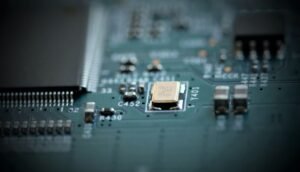Neural networks are a crucial part of artificial intelligence and machine learning systems. They have revolutionized various industries by providing accurate predictions and solutions to complex problems. Understanding how neural networks work can help us appreciate their power and potential. In this article, we will delve into the workings of neural networks and explore their applications and benefits.
Key Takeaways:
– Neural networks are a fundamental component of artificial intelligence and machine learning.
– They are inspired by the structure and function of the human brain.
– Neural networks consist of interconnected nodes called neurons that process and transmit information.
– This technology has extensive applications in fields like image and speech recognition, natural language processing, and autonomous vehicles.
Neural networks, also known as artificial neural networks (ANNs), are computational systems that simulate the architecture and functions of the human brain. They are composed of multiple layers of interconnected nodes called neurons. Each neuron receives inputs, processes them through an activation function, and produces an output that influences other neurons in the network. **Neural networks are designed to learn and generalize patterns from input data, allowing them to make predictions and decisions based on the learned information**. This ability makes them particularly adept at solving complex problems that are not easily programmable using traditional rule-based algorithms.
Neurons in a neural network are organized into layers: an input layer, one or more hidden layers, and an output layer. The input layer receives the initial data, while the output layer provides the final output or prediction. The hidden layers, as the name suggests, are sandwiched between the input and output layers and play a crucial role in processing and transforming information. **During this process, neural networks continuously adjust the weights and biases of the connections between neurons through a training phase**. This training phase, often facilitated by optimization algorithms like backpropagation, allows neural networks to iteratively fine-tune their internal parameters until they achieve the desired level of accuracy.
*Neural networks possess an incredible ability to recognize and extract patterns from complex and high-dimensional data, enabling applications such as image recognition and natural language processing.*
To better understand the inner workings of neural networks, let’s take a closer look at the components within a neuron. Each neuron receives inputs, typically represented by numerical values, which are multiplied by corresponding weights. These weighted inputs, along with a bias term, are then passed through an activation function, which determines the neuron’s output based on its inputs. Popular activation functions include the sigmoid, ReLU, and hyperbolic tangent functions. **The activation function introduces non-linearities into the neural network, allowing it to model complex relationships between inputs and outputs**.
In addition to the activation function, neural networks require a learning algorithm to adjust the weights and biases during training. Backpropagation, widely used in neural networks, calculates the error of the network’s output compared to the desired output and propagates this error back through the network to update the weights accordingly. This iterative process helps the network converge towards an optimal set of weights that minimize the overall error.
Table 1: Activation Functions
————————————-
| Function | Range |
————————————-
| Sigmoid | (0, 1) |
| ReLU | [0, infinity) |
| Tanh | (-1, 1) |
————————————-
Table 2: Neural Network Layers
————————————-
| Layer | Function |
————————————-
| Input Layer | Receives data input |
| Hidden Layer(s) | Process information |
| Output Layer | Provides final output |
————————————-
Table 3: Applications of Neural Networks
————————————-
| Application | Description |
————————————-
| Image Recognition | Identifying objects, faces, and patterns in images |
| Natural Language Processing | Processing and understanding human language |
| Autonomous Vehicles | Enabling self-driving cars and vehicles |
————————————-
In conclusion, neural networks are a powerful technology that mimics the structure and function of the human brain. They consist of interconnected nodes (neurons) that process and transmit information. With their ability to learn and recognize complex patterns, neural networks have proven invaluable in image recognition, natural language processing, and autonomous vehicles, among other applications. Now that you have a better understanding of how neural networks work, you can appreciate the profound impact they have on various industries and the potential they hold for the future. So dive in and explore the exciting realm of neural networks!

Common Misconceptions
Misconception 1: Neural networks simulate the human brain
One common misconception about neural networks is that they work exactly like the human brain. Although neural networks are inspired by the structure and functionality of the human brain, they are not an exact simulation of it. Here are three relevant bullet points to counter this misconception:
- Neural networks are composed of artificial neurons, not biological ones.
- Unlike the human brain, neural networks are designed for specific tasks and lack consciousness or self-awareness.
- Neural networks rely on mathematical algorithms and numerical computation instead of biological processes.
Misconception 2: Neural networks are infallible
Another misconception is that neural networks are always accurate and infallible. While neural networks have shown incredible performance in various applications, they are not immune to errors. The following bullet points challenge this misconception:
- Neural networks require large amounts of high-quality training data to learn effectively.
- Improper model design or training can lead to suboptimal performance and inaccurate results.
- Neural networks can be vulnerable to adversarial attacks, wherein carefully crafted input can fool the model.
Misconception 3: Neural networks are solely responsible for their output
Some people wrongly assume that neural networks are solely responsible for the output they produce, without considering other factors involved. This misconception neglects the broader context of neural network applications. These counterarguments can be made:
- Data quality and diversity significantly impact the performance and generalization of neural networks.
- The preprocessing of input data, feature selection, and engineering also play crucial roles in the final output.
- Human biases embedded in the training data can be reflected in the neural network’s output.
Misconception 4: All neural networks are deep neural networks
Many people mistakenly believe that all neural networks are deep neural networks. While deep neural networks, with multiple hidden layers, have gained popularity in recent years, they are not the only type of neural network in existence. The following points debunk this misconception:
- Shallow neural networks, with only a few layers, can still achieve remarkable results, especially for simpler tasks.
- Deep neural networks require more computational resources and training time compared to shallow networks.
- Different network architectures, such as convolutional neural networks (CNNs) and recurrent neural networks (RNNs), serve specific purposes and excel in different domains.
Misconception 5: Neural networks are a recent development
Lastly, there is a misconception that neural networks are a recent innovation. While the recent advancements in deep learning have brought neural networks into the mainstream, the concept of neural networks has been around for decades. The following bullet points highlight this fact:
- Artificial neural networks were initially proposed in the 1940s and 1950s.
- Research on neural networks experienced cycles of enthusiasm and decline before the recent resurgence.
- The perceptron, a fundamental model in neural networks, was developed in 1957.

Introduction to Neural Networks
Neural networks are powerful machine learning algorithms inspired by the human brain. They consist of interconnected nodes called neurons, which process and transmit information. Understanding how neural networks work is essential for grasping their potential in various applications. This article aims to illustrate the fundamental concepts of neural networks through a series of informative and visually appealing tables.
Neuron Activation Functions
Activation functions determine the output of a neural network’s neurons based on their input. Here are some commonly used activation functions:
| Function | Equation | Range |
|---|---|---|
| Sigmoid | 1 / (1 + e^(-x)) | (0, 1) |
| ReLU | max(0, x) | [0, ∞) |
| Tanh | (e^x – e^(-x)) / (e^x + e^(-x)) | (-1, 1) |
| Leaky ReLU | max(0.01x, x) | (-∞, ∞) |
Types of Neural Networks
Neural networks come in various forms, each suited for specific tasks. Here are four different types of neural networks:
| Network Type | Description |
|---|---|
| Feedforward Neural Network | Data flows only in one direction, without cycles. |
| Recurrent Neural Network (RNN) | Allows data to flow in cycles, enabling temporal dependencies. |
| Convolutional Neural Network (CNN) | Designed for processing grid-like structured data, e.g., images. |
| Generative Adversarial Network (GAN) | Composed of two networks: a generator and a discriminator, competing against each other. |
Loss Functions
Loss functions quantify the disparity between predicted and actual values, enabling the neural network to learn. Different tasks require specific loss functions:
| Task | Loss Function |
|---|---|
| Classification | Cross-Entropy |
| Regression | Mean Squared Error (MSE) |
| Sequence Generation | Connectionist Temporal Classification (CTC) |
| Anomaly Detection | Mean Absolute Error (MAE) |
Training a Neural Network
Training a neural network involves iterative processes to optimize its performance. Here are some common techniques used during neural network training:
| Technique | Description |
|---|---|
| Backpropagation | Adjusts weights based on computed errors, improving accuracy. |
| Dropout | Prevents overfitting by randomly “dropping out” neurons during training. |
| Batch Normalization | Normalizes the output of each layer to enhance training stability. |
| Early Stopping | Halts training when the validation loss begins to increase, avoiding overfitting. |
Applications of Neural Networks
Neural networks find applications across various fields due to their remarkable capabilities. Here are some practical uses:
| Domain | Application |
|---|---|
| Computer Vision | Object recognition, image segmentation |
| Natural Language Processing (NLP) | Machine translation, sentiment analysis |
| Finance | Stock market prediction, fraud detection |
| Healthcare | Disease diagnosis, drug discovery |
Advantages and Limitations
Neural networks possess strengths and constraints, making them appropriate for specific scenarios. Let’s explore some advantages and limitations:
| Advantages | Limitations |
|---|---|
| Can learn complex patterns | Require large datasets for training |
| Parallel processing capability | Computationally intensive |
| Adaptability and generalization | Black-box nature (lack interpretability) |
| Robust to noise in data | Prone to overfitting |
Conclusion
Neural networks are powerful tools for solving complex problems across various domains. By understanding their activation functions, network types, loss functions, training techniques, and applications, we can leverage neural networks’ potential to drive innovation. Although neural networks possess numerous advantages, it’s important to consider their limitations and choose appropriate approaches accordingly. Embracing the potential of neural networks empowers us to unlock new possibilities in the field of artificial intelligence.
Frequently Asked Questions
How does a neural network work?
In a nutshell, a neural network is a computational model inspired by the human brain. It consists of interconnected nodes, or “neurons,” that exchange information through weighted connections. By processing input data through layers of neurons and adjusting the connection weights based on desired outputs, a neural network can learn to perform complex tasks.
What is the purpose of activation functions in a neural network?
Activation functions introduce non-linearities into the network, allowing it to learn and model more complex relationships in the data. They determine the output of a neuron given its inputs and help in mapping the input space to the desired output space.
What are the different types of neural network architectures?
Some common neural network architectures include feedforward neural networks, recurrent neural networks, convolutional neural networks, and generative adversarial networks. Each has its own structure and is suited for specific tasks such as classification, sequence prediction, image recognition, and generative modeling.
How are the weights and biases in a neural network determined?
The weights and biases in a neural network are initially assigned random values and then updated through a process called backpropagation. Backpropagation calculates the gradient of a loss function with respect to the network’s weights and biases, allowing the network to adjust them in a way that reduces the overall error.
Can a neural network learn from unlabeled data?
Yes, neural networks can learn from unlabeled data using unsupervised learning techniques. One common approach is through autoencoders, which are neural networks trained to reconstruct their input data. By minimizing the difference between the original input and the reconstructed output, the network learns to extract meaningful features from the data.
What is the role of deep learning in neural networks?
Deep learning refers to the use of neural networks with many hidden layers. By leveraging these deep architectures, deep learning has the ability to automatically learn hierarchical representations of the data. This allows neural networks to effectively model complex patterns and perform tasks such as image recognition and natural language processing.
How do neural networks handle overfitting?
Overfitting occurs when a neural network becomes too specialized in the training data and fails to generalize well to new, unseen data. To handle overfitting, techniques such as regularization, dropout, and early stopping can be used. These methods help prevent the network from memorizing the training examples and encourage learning more robust representations.
What are some limitations of neural networks?
Neural networks require significant computational resources and extensive training data to achieve good performance. They can also be prone to overfitting, especially when dealing with limited data. Interpreting and understanding the inner workings of a trained neural network can be challenging due to their complex nature.
Can neural networks be used for real-time applications?
Yes, neural networks can be deployed in real-time applications. However, the speed and efficiency of a neural network depend on various factors, including its architecture, the size of the input data, the hardware used, and the complexity of the task. Optimizations such as model compression, parallel processing, and hardware acceleration can be employed to improve real-time performance.
Are neural networks the same as artificial intelligence?
No, neural networks are a subset of artificial intelligence. Artificial intelligence encompasses a broader field that includes various techniques and methodologies for creating intelligent systems. Neural networks are just one part of this broader field and are particularly well-suited for pattern recognition and machine learning tasks.




